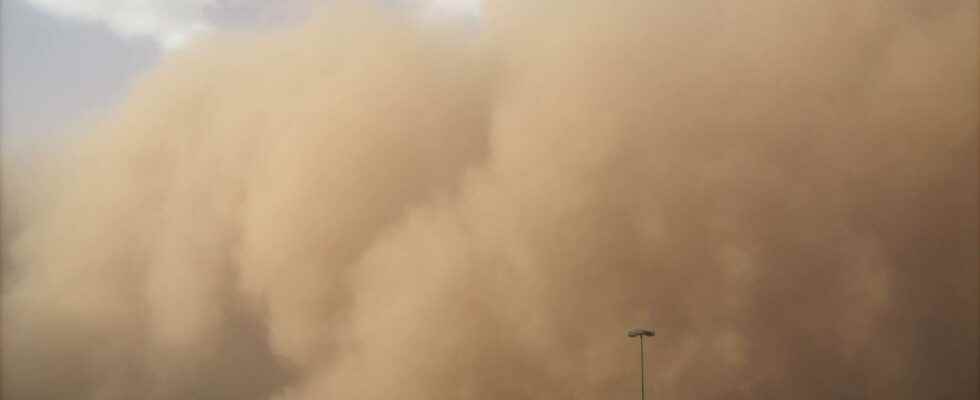Less than a week afteroutbreak giant tornado on Friday, December 10, another awe-inspiring phenomenon swept through the central United States: a Dust Bowl, a dry storm with gusts over 170 km / h.
You will also be interested
[EN VIDÉO] Saving California from drought with solar power Every year during the summer, California is plagued by drought. These water shortages handicap crops but give rise to innovative projects such as WaterFX, intended to pump the precious liquid into the depths using solar energy. The National Geographic Channel tells us more about this company in an excerpt from the Inventing the Future series. The next episode airs tonight, Friday, February 26, 2016 at 9:30 p.m.
The presence of a depression system, associated with heat record which lasts since the beginning of December over part of the United States, has contributed to the formation of violent thunderstorms, tornadoes, snow showers in the mountains and wind stormy in the space of a single day. This Wednesday, December 15, at least 20 new tornadoes have been reported under thunderstorms of Nebraska and Iowa. But the clouds thunderstorm had consequences other than these swirls : in Colorado, a gigantic downpour of snow ” snow squalls »(On the mountains) and torrential rains (at low altitude) was photographed by the locals and caused many traffic problems.
More impressive, and more catastrophic, the wind associated with the low pressure system generated a phenomenon resemblingapocalypse : a ” Dust Bowl », A dust storm gusting up to 172 km / h in Lamar, Colorado. In addition to causing accidents serial road and city damage, this dust rose to form a cloud spanning tens of thousands of square kilometers between Colorado, Kansas and New Mexico, reducing visibility to zero. This Dust Bowl has been greatly aggravated by the deterioration of the soil in this area: the practice of intensive agriculture, which leaves bare soils at this time of year, for hundreds of kilometers without any tree no vegetation to stop the wind, and dust from erosion.
[Thread] A MAJOR storm concerns Colorado: up to 172km / h measured in the plains! There is intense agriculture (no hedges, bare and dry soil) for hundreds of km around. Predictable consequence: erosion. A monstrous SANDSTORM descends on the region. pic.twitter.com/y4w2kt6IV1
– Dr. Serge Zaka (Dr. Zarge) (@SergeZaka) December 15, 2021
Due to this powerful wind, the record heat and the drought persistent, the fire risk was described as extreme between North Texas and Kansas, an exceptional fact in the middle of December.
The Dust Bowls : ecological disasters
the bigger Dust Bowl American occurred in the 1930s: After ravaging the natural prairies of Colorado, Nebraska, Kansas, Oklahoma, New Mexico and Texas and wiping out the majority of herbivores (both wild and domestic), farmers of the time were faced with to a series of devastating dust storms. In question, the practice of intensive agriculture characterized by the “over-tillage” of land, causing very significant erosion. The onset of a lasting drought from 1931 to 1937 then did not allow cereal plants to grow, leaving the soil bare, exposed to storms. This is how the disaster of ” Dust Bowl 1930s ”took hold. Several thousand tons of dust were raised on other states, as far as New York and Chicago. The consequences on human activities, agriculture andecology were so important and sustainable that several laws were then passed to re-vegetate degraded areas, with wild plants naturally occurring in the region.
New Dust Bowl of December 15 shows that there is still a long way to go in the management of agricultural and natural lands.
Interested in what you just read?
.
fs11
